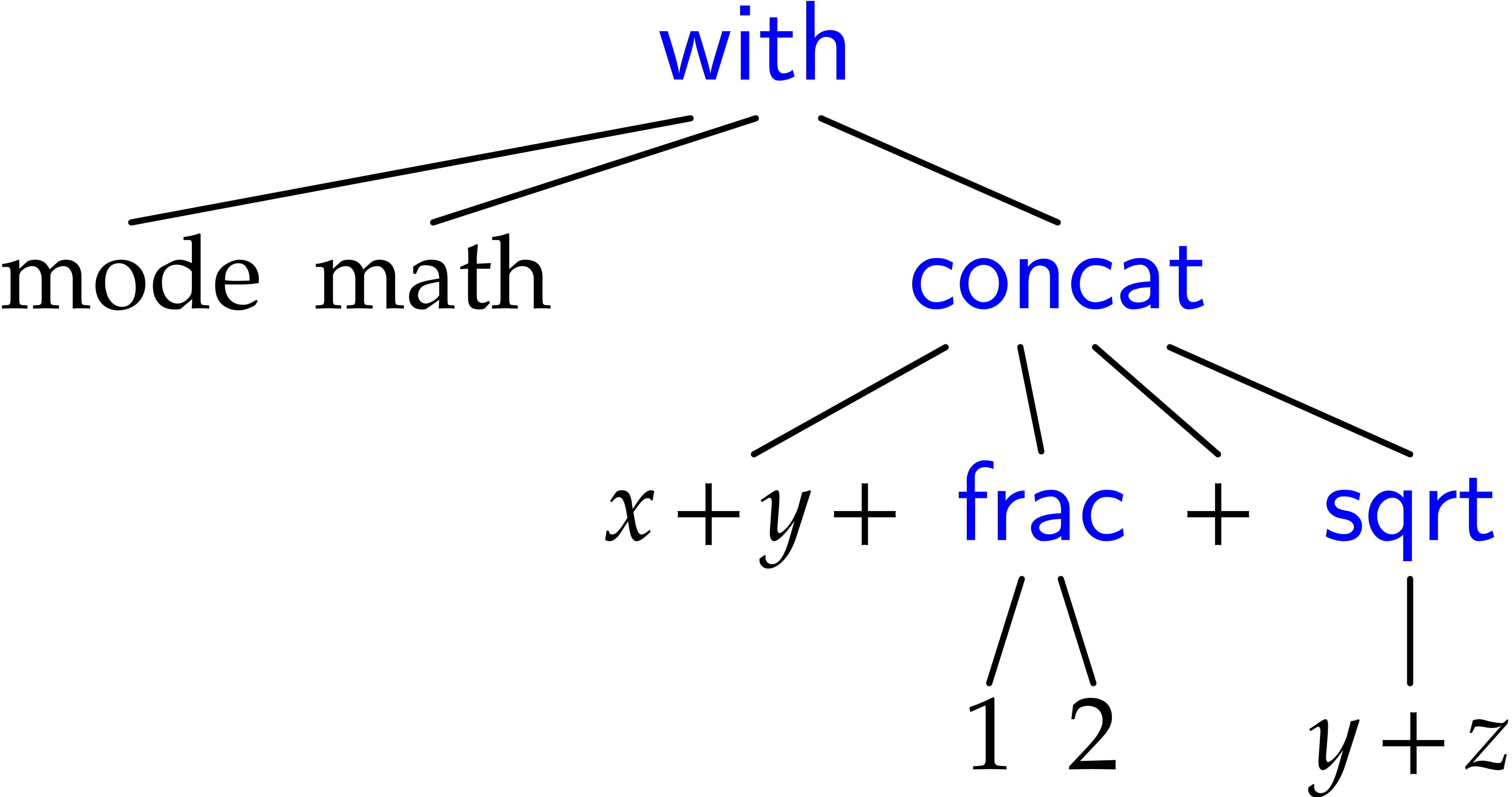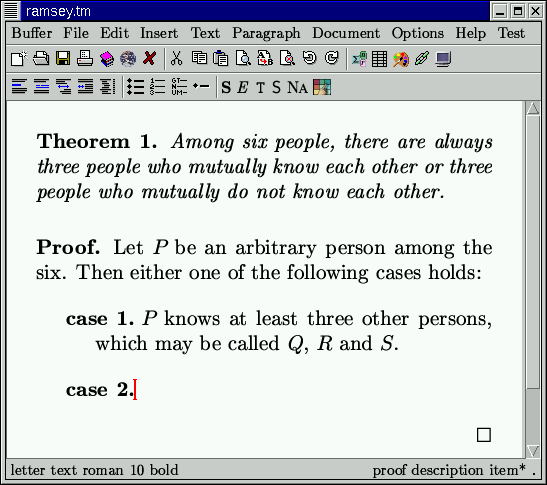

Moreover, TeXmacs can be used as an interface for many external systems for computer algebra, numerical analysis, statistics, etc.
#TEXMACS FONTS SOFTWARE#
The software includes a text editor with support for mathematical formulas, a small technical picture editor and a tool for making presentations from a laptop. The rendering engine uses high-quality typesetting algorithms so as to produce professionally looking documents, which can either be printed out or presented from a laptop. The software aims to provide a unified and user friendly framework for editing structured documents with different types of content (text, graphics, mathematics, interactive content, etc.).
#TEXMACS FONTS FREE#
"GNU TeXmacs is a free wysiwyw (what you see is what you want) editing platform with special features for scientists. GNU TeXmacs is a free scientific text editor inspired by TeX and emacs.

I think the serifs on the capital T come too low as well. Personally I dislike the shape of the lower case Roman t (the curl at the bottom is way too long and comes too high) and I dislike the italic u and v (as I can’t tell them apart). I think a modern typeface (that is, one with contrast between thin and thick strokes among other things) is more acceptable on computers now that high-dpi displays are more common, but the resolution still isn’t perfect and that style isn’t so fashionable in most cases today. Maybe you and the people you know are very used to computer modern? Complaints I hear often compare it to the fonts (and typesetting in general) of people’s preferred printers from before computer typography, so a particular typeface provided by monotype and set by a particular press. Personally, comparing Monotype Modern (as in the first editions of TAOCP) and Computer Modern (in print, and using "true" CM), I don't think Computer Modern looks worse than the source typeface in terms of having terrible balance or appearing like "a font designed by an engineer" the issue is probably more the "shared taste" you mentioned: Knuth's target aesthetic was itself different. The poor Type 1 versions of Computer Modern cause the letter stems to appear thin, and even more so on low-resolution devices like monitors, causing the serifs to appear thicker in comparison.So, people au fait with modern typographical fashions don't quite like the associated style (Scotch Roman typefaces, etc), while many mathematicians quite prefer it. Yes, what Knuth was aiming for (Monotype Modern 8A, or the look of math textbooks he used as a student, or mathematical journals of a certain period: ) was very much an early 20th-century / late 19th-century look, and it seems the fashion in contemporary typography circles (I suspect this started with William Morris in the 19th century already) to look down on that period and all that it entails (like larger spaces between sentences: witness Bringhurst's comments about "In the nineteenth century, which was a dark and inflationary age in typography and type design" etc).My guess is that the opinion you're expressing results from a combination of both the above: The publishers' move to phototypesetting could not recapture that look, and digital typesetting was starting to become feasible, so he took up the problem himself: he wanted to reproduce Monotype Modern so he needed TeX to typeset it, and Metafont to specify it (and Computer Modern was the result). Those books were typeset with hot-metal typesetting (on Monotype machines), and in fact when Addison-Wesley approached Knuth in 1962 (when he was in grad school) to write a book, he was excited because he loved the appearance of their books. Is this any worse in Computer Modern than in Monotype Modern, the typeface that Knuth was trying to reproduce? This is the font used for TAOCP Vol 1 first edition (1968), Vol 2 first edition (1969), Vol 3 first edition (1973) and Vol 1 second edition (1973). The exact proportions could be found by checking Volume E or generating proofs from the Metafont sources (haven't tried that), but this seems like the well-known problem with the "spindly" Type-1 versions of CM that many people use today, than in Knuth's actual Computer Modern as in his printed books. Is this really true? I went to the bookshelf and pulled out three Knuth books, and at least to my eye, the serifs don't look noticeably thicker than the letter stems in the unbalanced way you mentioned.

the serifs in Computer Modern are thicker than the thin stems of letterforms.ġ.


 0 kommentar(er)
0 kommentar(er)
